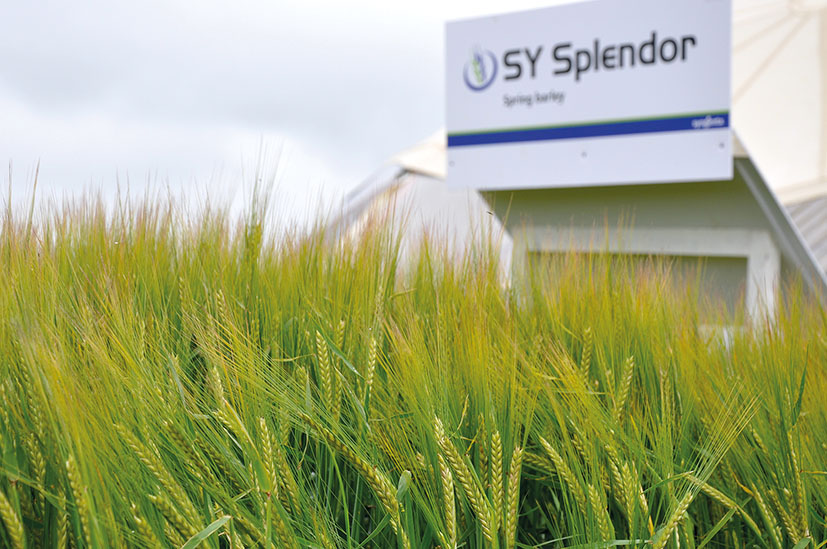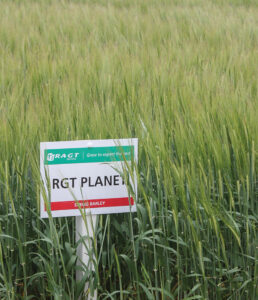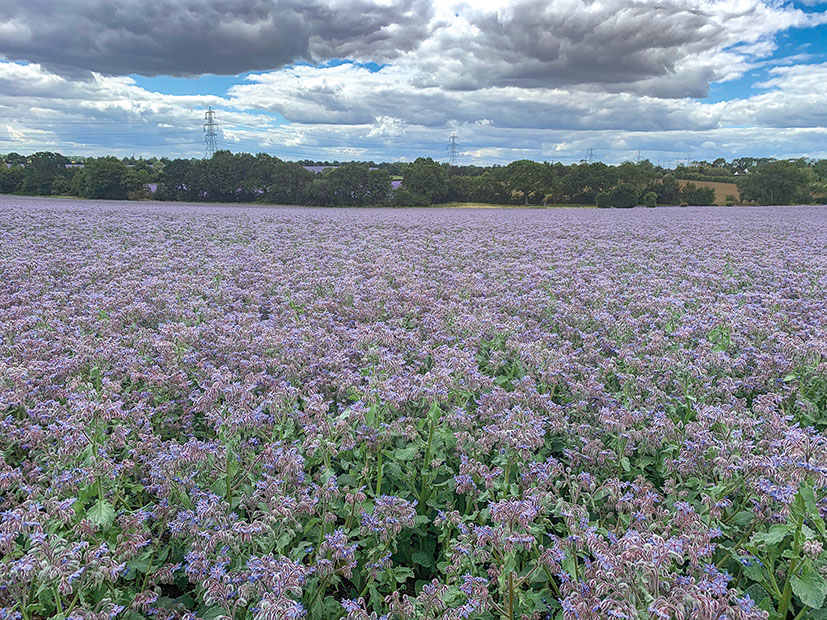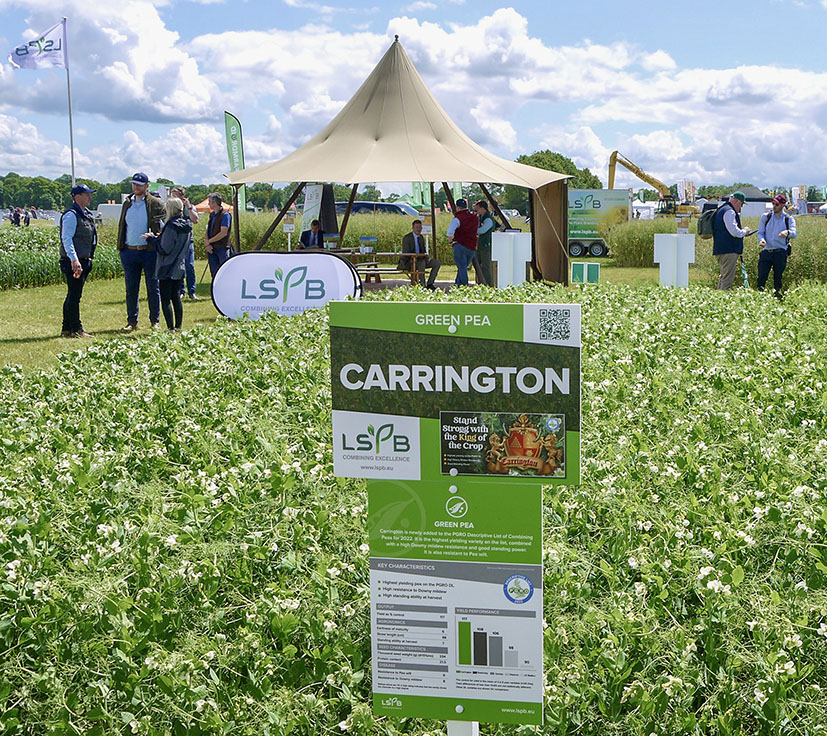Cut costs, improve cashflow and spread workloads with spring cropping options
16th November 2022
With lower yield variability and decreased input costs, not to mention being an important weed control tool for farms with a significant black-grass burden, spring cropping options offer some impressive benefits – despite the reduction in overall yield versus their winter counterparts.
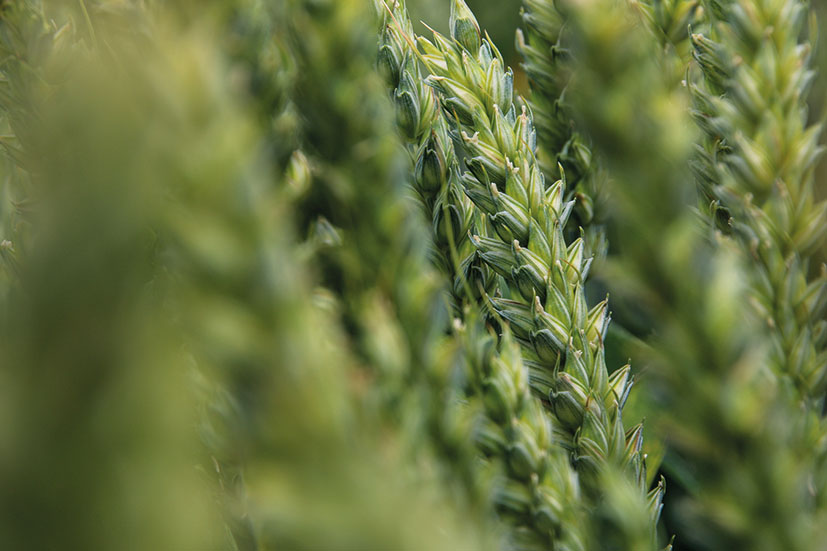
KWS Fixum
Given the extreme weather conditions seen over the last few years, along with significant increases in the cost of inputs, spring crops are increasing in popularity – particularly among farmers who rely on them for weed control, adding diversity to rotations and spreading the workload. What’s more, margins have also begun creeping up; going some way to reduce the profitability gap between the spring and winter varieties.
New spring-sown portfolio benefits all types of grower
New high-yielding wheats for both milling and feed use combined with a malting barley featuring “outstanding” alcohol yields are underlining KWS’ commitment to developing strong spring-sown options with valuable marketing opportunities, says the company’s Dr Kirsty Richards.
She comments: “Modern spring varieties are robust, flexible and profitable, with yields and physical grain qualities matching many of their late sown winter rivals and KWS is committed to investing in long-term breeding programmes to support this sector.
“Spring wheat, in particular, has seen a real resurgence in interest over recent years thanks to its rotational benefits helping growers buy time to get soils back in shape, tackle weeds more effectively and simplify their overall crop management.”
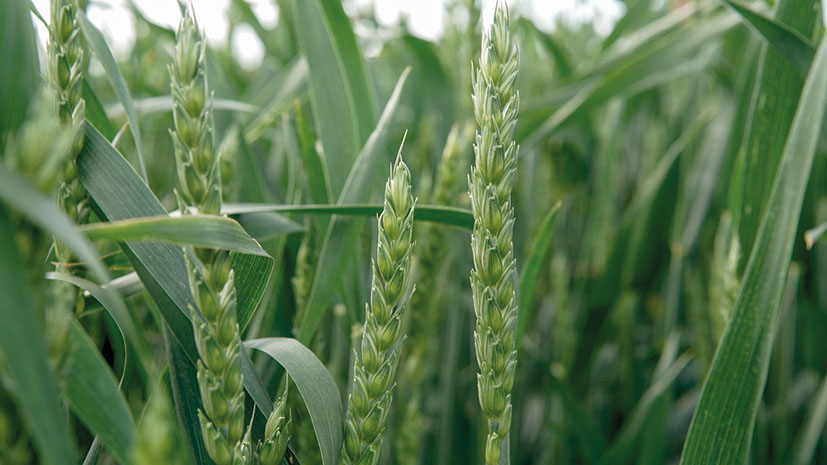
KWS Ladum
One of the most important developments in spring wheat for some years is the inclusion of the Group 1 variety KWS Ladum to the current RL, Dr Richards says.
“KWS Ladum is a KWS Sywell x KWS Talland cross which combines high yield with an excellent disease package, including a 7 for septoria.
“It’s the first of a new generation of spring wheat varieties for the UK market, capable of delivering top milling and baking quality for growers with exceptional productivity.
“With fantastic grain quality, including a protein level of 13.2%, a Hagberg of 324 and a specific weight of 78.0kg/hl, it’s a variety that is fully approved by UK flour millers, having the highest Group 1 quality.
“Its disease package is also strong, featuring an [8] for mildew, a 6 for yellow rust and 7s for brown rust and septoria. It’s a short and stiff-strawed variety that is early to harvest, too.”
KWS Fixum is another new spring wheat option on the RL for the first time this year, Dr Richards explains.
“KWS Fixum is the highest yielding spring wheat on the 2022/23 Recommended List, with a well-rounded disease package supported by good physical grain quality and agronomic characteristics.
“At 108% of controls when spring sown, it is 3% ahead of the next highest yielding variety on the RL and this is combined with super grain quality featuring a specific weight of 77.8kg/hl.
“Furthermore, during testing over the last few very different spring seasons, KWS Fixum has delivered consistently high yields – no matter what the weather conditions under which it has been grown.”
For spring barley, candidate-listed KWS Curtis provides good potential for both the brewing and distilling sectors in a true farmer-friendly package that could help growers meet rising demands for increasingly sustainable production, she believes.
“KWS Curtis could well be a strong dual-purpose variety for the malting industry and is currently under test by the MBC with potential for both the brewing and distilling markets thanks to its high levels of hot water extract, good spirit yield and top grain credentials.
“In the field, KWS Curtis has good yields across the country. In the north it achieves 104% of controls, while in the east this rises to 108% – which coupled with its earliness and stiff straw, will make it a first-choice variety for many growers.
“KWS Curtis has strong sustainability credentials too. Its combination of high yields, good alcohol yields and strong straw make it a step ahead of current commercial varieties in terms of CO2 emissions, helping ensure more sustainable production for the entire supply chain.”
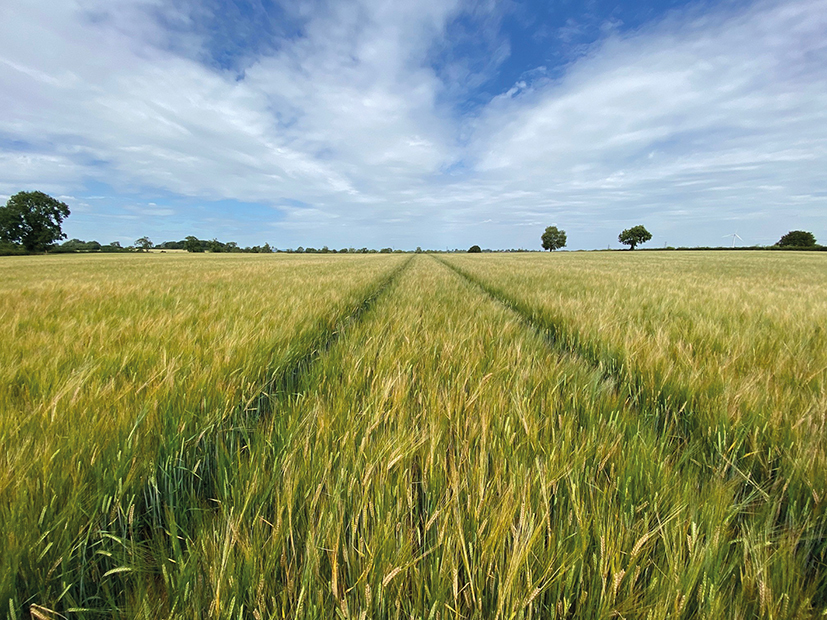
LG Diablo spring barley.
“Phenomenal” yields for spring barley variety
The third year of growing LG Diablo was certainly one to remember for Yorkshire farmer Paul Rogers (right), after the variety revealed its true yield potential on his 182ha farm near Ripon.
Some 25ha averaged 10t/ha sold weight at 15.5% moisture, with one field hitting an impressive 10.6t/ha. Furthermore, all crops achieved the full malting specification required by grain buyer Saxon Agriculture, coming in at 1.51% nitrogen and an average specific weight of 68kg/hl.
“I’ve never seen anything like it. The barley was rolling off the combine like a crop of first wheat. It was phenomenal.”
Mr Rogers acknowledges the highest yields did come from the farm’s best “good bodied” land, that did not drought off in the dry season, but even so, he would have still only expected yields of nearer 7.5t/ha.
“I don’t know exactly where the big yield came from, because we didn’t do a lot different to the year before, apart from getting crops in earlier, around mid-March instead of early April. It was just an earlier spring; the soil conditions were correct for drilling.”
The LG Diablo established quickly, resulting in a dense plant stand that “looked like a carpet,” he notes. “The key was to keep it standing, which meant we did put on an extra growth regulator, in addition to Terpal (ethephon + mepiquat).”
Mr Rogers admits that while he may not be able to guarantee hitting such impressive yields every year, LG Diablo’s performance in 2022 at least demonstrates what the variety is capable of on his farm and soil types.
A key reason for growing spring barley on the farm is for its role in controlling black-grass and ryegrass, Mr Rogers says. “Both are becoming more of a problem, but I’ve found that if I can get thick coverage of spring barley, it does a tremendous job of smothering the black-grass, which we did see last season.”
He adopts a very traditional approach to establishing spring barley. Preceding stubbles are left to green-up after harvest, before land is ploughed in November, allowing bare soil to weather and breakdown naturally over winter. He then goes in with a power-harrow/box drill combination, once ground is dry and warm enough in the spring, usually around early April.
“It normally doesn’t worry me drilling spring barley towards the middle of April, if that’s when conditions are right, so long as I can make sure it goes into moisture, and I can conserve that moisture in the seedbed.
“The important thing is to drill when conditions are right, not on a particular date.”
Ploughing in November allows time to achieve a good flush of weeds in the autumn, which means no pre-emergence spray is needed in spring. “I don’t want anything knocking the crop, and pre-ems can sometimes hold barley back a bit. I prefer to wait until weeds have emerged after drilling, and then tackle what’s there. The spring barley itself is our grassweed control, so we only really need broad leaf chemistry.”
“LG Diablo has performed well for us in all the three years we’ve grown it, so I’ve no plans to grow anything else next year,” he concludes.
Spring barley being launched into feed market
A spring barley variety that combines consistent yields across all UK regions on the 2022 AHDB Recommended List with high grain quality in terms of specific weight, is being launched to growers of feed barley.
SY Splendor, from Syngenta, was originally bred for the malting market where it was evaluated for brewing use. But, despite having been withdrawn from malting tests, it continues to offer useful features that could appeal to feed barley growers, Syngenta seeds portfolio marketing manager, Kathryn Hamlen, points out.
Topmost among these are its consistent treated yields of 102% of control varieties across all regions on the 2022 AHDB spring barley Recommended List, says Mrs Hamlen, plus its high specific weight of over of 68kg/hl. But SY Splendor also offers other characteristics that could be useful if growing spring barley in certain grass weed situations, she adds.
“Spring cropping is a well-known method of reducing grass weed populations,” says Mrs Hamlen, “as it gives growers more time to remove an extra flush of weeds before planting. On top of this, spring barley is a competitive crop and therefore has more effect in suppressing grass weeds. However, the other desirable traits of SY Splendor are its vigorous growth habit and stiff straw with good brackling resistance.
“Early vigorous growth helps a variety to better compete against grass weeds from the beginning of the season – allowing good plant establishment before the grass weeds get a chance to compete. Stiff straw helps later in the season if grass weed populations are higher – as it can help the crop to better withstand grass weeds pulling it down.
“Meanwhile, specific weight is a stable characteristic, which means if you choose a variety that starts with a high specific weight, it will help to mitigate against the competitive effects that grass weeds have for reducing crop grain-filling.
“It is precisely because SY Splendor was originally developed as a malting variety that it has such a good specific weight,” Mrs Hamlen adds.
Currently, the feed sector accounts for about 20% of the UK spring barley market.
Consistency makes barley variety a “firm farmer’s favourite”
RGT Planet spring barley has earned a reputation for exceptional consistency among growers and maltsters since it appeared on the Recommended List in 2015 and the variety is set for another successful season in 2023, the breeder reckons.
Farmers know how to grow the variety, which has become a favourite for many thanks to its dependable yields, strong agronomics and excellent grain quality, says RAGT’s arable crops manager Tom Dummett.
“RGT Planet is very vigorous, putting down strong roots and tillering profusely. It has good resistance to rhynchosporium and is excellent on ramularia.
“The variety produces an excellent sample, helped by its reluctance to deteriorate in the field, protecting specific weight and germination.”
As well as making a big impact in the brewing supply chain, RGT Planet has also taken a significant share of the feed barley market, adds Mr Dummett.
Cambridgeshire farmer Sam Morris grows combinable crops across 750ha of heavy clay from Top Farm, Croydon, and has sown RGT Planet for the past three springs.
“We went into barley purely to help keep black-grass in check, but it seems to perform really well on this farm. We use it as the first crop in a double spring break, following it with beans.
“Planet itself is pretty competitive. We drill early to get it up and away, and we combine it as early as we can, which helps spread the harvest.”
Mr Morris grew 55ha of the variety last season, and was impressed despite the dry season. “We drilled the crop in February and cut it on 25th July. It yielded over 9t/ha – it’s now done that over three very different years, and it’s been fairly easy to get a brewing premium.”
Gavin Bowser, who looks after 1,000ha of mainly arable cropping at Croft Marsh, Skegness, Lincolnshire, grew around 120ha of RGT Planet last season on silty clay loams to help control black-grass.
“The variety does the job well. We aim for a good thick crop to smother the black-grass and to get good yields.
“We’ve been growing Planet for six years and we were pleased with it again this year. A 44ha block which was ploughed and cultivated after maize and drilled on 23th March, looked exceptionally well.”
The crop averaged 8.5t/ha and met malting specification. “That was pretty good in a year like this, especially as it doesn’t require the chemicals and fertiliser that winter wheat does.”
Ken Goodger’s 10ha crop of RGT Planet averaged 8.75t/ha at Pates Farm, Welney, Norfolk. “That was an excellent yield for a spring crop this season, although we did drill it in early March on very good silty land.”
Mr Goodger, like the other growers, will be sowing RGT Planet again next spring. “It suits our fertile soils; it doesn’t brackle over or go flat, so it combines well,” he explains.
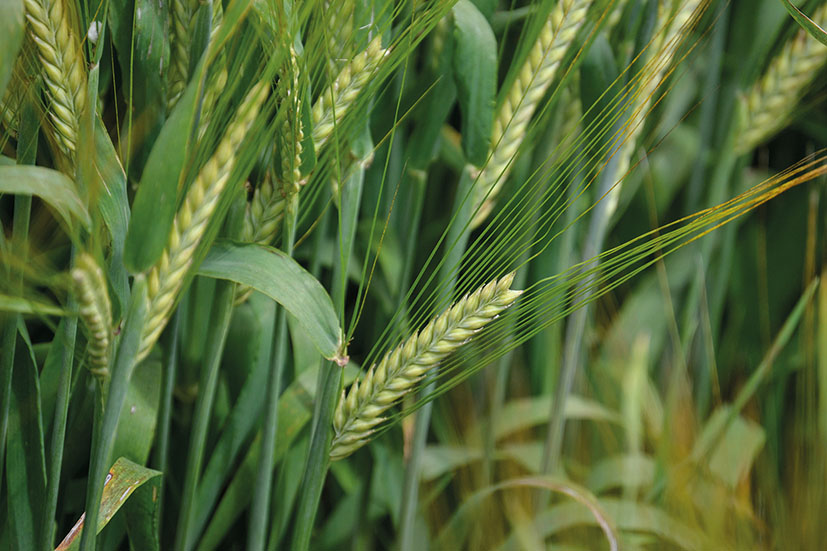
RGT Planet
Niche market crops
In a year of uncertainty and volatility in all areas of our lives, it is a good moment to take stock and look at how we can be more in control of our gross margins, comments Fairking Ltd.
Fairking Ltd has been growing niche market crops since the 1970s, and believes that by far the most consistent and successful of these has been borage; the seed oil of which is used in both pharmaceuticals and cosmetics.
Although it is a crop which requires special attention at harvest, Fairking says it has more than 100 growers throughout the country benefitting both in their arable rotation and also financially when compared to other spring sown crops.
As both farmer and merchant, the company explains it can see the benefits a later sown spring crop brings to its own farm’s black-grass control by both allowing a late application of glyphosate in April before sowing, and the ability to direct drill the following wheat into a low-residue, slug-free borage stubble. Financially, being able to grow a crop where the price is fixed means growers know their costs and gross margin before starting the season, meaning they can make a decision rather than take a gamble.
One of the reasons for the crop’s huge success is that the English climate produces the best quality oil in the world, making it very difficult for other countries to compete. Dutch trader De Wit Speciality Oils owns a speciality extraction plant on Humberside. It offers safe back-to-back grower contracts through Fairking as its sole agent, based in Essex.
With increasing demand, the future looks bright and prices for next year’s crop are now set at £3.85/kg with possible additional bonuses. Yields are normally around 400kg/ha but can be as high as 650kg/ha. Low fertiliser and chemical requirements mean that the main growing costs are for seed and swathing.
Borage is an attractive, environmentally- and bee-friendly crop which provides bee keepers with huge quantities of exceptional honey.
Harvesting does require a bit more attention than some of the other crop alternatives, but Fairking explains the rewards are worthwhile and says it is there to help with contracts and specialist advice.
Interested farmers wanting further details should contact Fairking directly.
Strong year for spring beans as demand and prices remain high
Despite the UK’s driest summer since 1976, this season’s spring bean crop yields have generally held up well confirms Danny Richardson (pictured), combinable seed product specialist for Wynnstay Group PLC.
Based in Shrewsbury and serving growers across the western half of Britain, from Chester down to Cornwall, Mr Richardson believes a combination of higher rainfall in early spring, low disease pressure, and the opportunity to utilise earlier drilling windows following a mild winter helped many farmers during an agronomically challenging year dominated by extreme heat and summer drought conditions.
“Had this also been a high-pressure year for disease, then that would have certainly compounded the issues already facing growers leading to much greater yield losses. That aside, it’s been a good year, particularly for those who drilled spring beans early. There’s a squeeze on soya right now which has helped increase demand for pulses, and the market for home grown protein is buoyant with good ex farm prices being paid.
“Of the newer varieties on the 2022 PGRO Descriptive List, Capri catches the eye as a high yielding, early maturing bean. With a solid rust score, respectable thousand seed weight (TSW) and excellent standing ability it ticks the right boxes for both domestic and export markets and is definitely a variety that growers need to keep on-side,” he concludes.
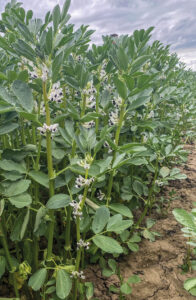
Capri spring bean variety
For Boston-based first-time Capri grower Danny Anderson, of P & N Anderson and Son, an early drilling window of 23rd to 24th March proved to be the right strategy, as his 14ha crop of Capri raced away during April, despite a dry spring and less moisture than he’d have preferred.
“We direct drilled this time to get the seed a little deeper into the soil, allowing it to find more moisture, then rolled immediately afterwards to lock in the moisture. The Capri established very evenly and there were no bare batches. By 10th May, when we sprayed a combination of Laser plus Toil to clear up some wild oats and post-emergence weeds, the crop has successfully grown away from any smaller emerging weeds, so it was a cautionary spray if anything.
“Only one fungicide was applied post-flowering, primarily for rust and downy mildew control and we added some foliar feed to give the Capri a boost during the prolonged dry spell. Overall, the crop coped very well with the high summer temperatures, reaching a height of six feet in places, with the taller canopy helping to give the soil around the base of the plants a decent level of shade.
“We grew Lynx in 2021, a shorter crop in height, and subsequently lost some beans in the harvest that the combine header couldn’t reach; but there were no problems this time. When we cut Capri on 29th August, the final overall yield of 5t/ha was impressive, given the substantial dry spell. With more moisture I’ve no doubt we’d have been looking at an even higher yield.
“We’ll definitely grow Capri again. It’s a tall early-maturing variety, looks agronomically strong, coped well with the hot dry weather and flowered well producing a lot of pods. The potential is there for an even higher yield with slightly better weather,” confirms Mr Anderson.
Topping the green pea variety choice
LS Plant Breeding Ltd’s Carrington is the highest yielding green pea on the PGRO Descriptive List of combining peas, with a high downy mildew resistance and good standing power. It is also resistant to pea wilt.
Michael Shuldham, pulses product manager for LSPB, details Carrington’s set of benefits for growers: “The variety was added to the PGRO Descriptive List 2022 for combining peas (DL) as the highest yielding pea of all with a yield figure seven points clear of the next green pea variety on the list.
“Added to its yield benefit, Carrington has high resistance to downy mildew (8) – especially important in light of the challenge of downy mildew control with the loss of Wakil XL.
“The variety’s high standing ability at harvest (7) updates the old perception of peas being prone to going down in poor weather. Modern varieties like Carrington are early to mature and stand much better than those of a decade or so ago.
“Colour retention on sample quality is also important for marketability – and Carrington stands out for its colour retention with trials data showing the variety consistently retains its colour.
“In summary, Carrington is one of a newer generation of pea varieties with improved genetic capacity led by traits such as its impressive yield potential, disease resistance and standing power.”
